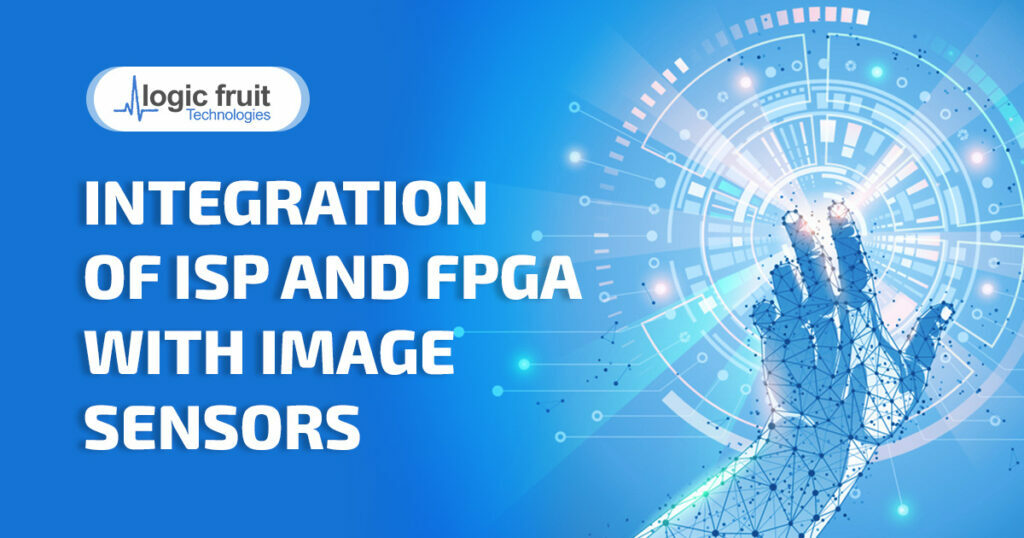Image processing has come a long way in recent years. One of the most significant advances has been the integration of Image Signal Processing and Field Programmable Gate Arrays.
This has allowed faster and more efficient image processing and better image quality. Regarding capturing and processing images, a few factors need to be considered. The first step is understanding the basic concepts of image processing.
This includes understanding the different types of image sensors, the various image processing algorithms, and how to implement them using either ISP or FPGA.
There are many benefits to integrating ISP and FPGA technologies. One of the most important is that it reduces latency.
This is because FPGAs can be used to parallelise tasks, which means that they can be completed much faster than if they were processed sequentially on a CPU.
This is especially important for real-time applications such as video streaming or gaming, where every millisecond counts.
What is Image Processing
Image processing is the manipulation and analysis of digital images to extract useful information or improve the image.
It is a broad field encompassing many techniques and applications and involves using computer algorithms and hardware to process images.
Overview of Image Signal Processing (ISP) in Image Processing
ISP stands for “Image Signal Processing.” It refers to processing digital images or video signals to enhance or extract useful information.
ISP typically involves a series of operations applied to the raw data captured by an image sensor in a digital camera or other devices. These operations may include preprocessing, demosaicing, color correction, exposure correction, sharpening, and compression.
ISP can be implemented in software using algorithms executed on a central processing unit (CPU) or graphics processing unit (GPU).
Alternatively, it can be implemented in hardware using dedicated circuits or programmable devices such as field-programmable gate arrays (FPGAs).
ISP plays a critical role in image processing by improving the quality and clarity of images and by enabling the extraction of useful information from them.
It is used in various applications, including digital photography, video surveillance, medical imaging, and machine vision.

Overview of Field Programmable Gate Array (FPGA) in Image Processing
A field-programmable gate array (FPGA) is a programmable hardware device that can implement digital circuits and systems.
FPGAs are made up of an array of configurable logic blocks (CLBs), and programmable interconnects, which can be programmed to implement a wide range of digital logic functions.
In image processing, FPGAs can implement image signal processing (ISP) algorithms, pipelines, and other image processing functions.
Image sensor technologies and their capabilities
An image sensor is a device that is used to capture images or videos in digital form. It is a critical component of cameras and other imaging systems and is responsible for converting light into a digital signal that can be processed and stored.
There are several different technologies used in image sensors, including

- Charge-coupled device (CCD) sensors: CCD sensors are made up of photodiodes, which generate an electrical charge when exposed to light. The charge is then transferred and amplified, and the resulting signal is used to create a digital image. CCD sensors are known for their high image quality and low noise, but they are relatively slow and consume more power than other types of sensors.
- Complementary metal-oxide-semiconductor (CMOS) sensors: CMOS sensors are made of an array of transistors that convert light into an electrical signal. They are faster and more energy-efficient than CCD sensors, but they may produce more noise and have lower image quality in some cases.
- Hybrid sensors: Hybrid sensors combine CCD and CMOS technologies designed to combine the best features of both types of sensors.
- Thermal Image Sensor: A thermal imager, commonly referred to as a thermal camera, is a heat sensor that can pick up on even the most negligible temperature variations. The apparatus gathers infrared radiation from nearby objects and builds an electronic representation of the scene using data on temperature differences.
Applications of ISP and FPGA in Image Processing
Utilizing computer techniques to manipulate digital photographs is known as image processing. Image processing can be approached from various angles, and these angles can be implemented using a variety of hardware and software platforms.
A field-programmable gate array is one hardware platform frequently utilized for image processing (FPGA).
An integrated circuit that can be configured to carry out a variety of functions is called an FPGA.
Because it can be designed to carry out the necessary operations in real-time, it is exceptionally well suited for image processing because it enables the quick processing of enormous volumes of data.
Several image processing methods, such as edge detection, picture enhancement, and image restoration, can be implemented using FPGAs.
They are frequently employed to create hardware accelerators for machine learning algorithms for object detection and picture classification.
An image processing system-on-a-chip is another common hardware platform for image processing (ISP).
An ISP is a single integrated circuit that includes every piece of hardware and software required to carry out image processing operations.
An ISP can be used to implement a wide variety of image processing algorithms and, like an FPGA, is intended to conduct image processing in real time.
ISPs are frequently employed in applications with constrained space, including mobile devices or tiny, transportable cameras. They apply to battery-powered gadgets and other situations where minimal power consumption is crucial.
FPGAs and ISPs can be used for a wide variety of image-processing applications. Some examples include:

- Medical imaging: Real-time processing of medical pictures, including X-rays, CT scans, and MRIs, is possible with the help of FPGAs and ISPs. This can aid medical professionals in identifying anomalies in the photos and making a more accurate diagnosis.
- Surveillance: FPGAs and ISPs can handle security camera data in real time. They can be set up to alert the proper authorities or sound an alarm when specific objects or occurrences are spotted.
- Robotics: Robots can travel and interact with their environment through image processing. The robot can make judgments based on the data it receives by using FPGAs and ISPs to process images from cameras or other sensors in real-time.
- Computer vision: Computer vision systems, which are used to provide computers the ability to comprehend and interpret images and video, depend heavily on image processing. Real-time algorithms for applications like object detection and image classification can be implemented using FPGAs and ISPs.
- Augmented reality: Real-time image processing from cameras using FPGAs and ISPs can be used to generate augmented reality experiences. Users can view and interact with virtual items as if they were there by superimposing them on top of the natural environment.
Integration of ISP and FPGA with image sensors
Image sensors are devices used to capture images by converting light into electrical signals. They are essential to many image processing systems, providing the raw data used to create digital images.
FPGAs and ISPs can be integrated with image sensors to create complete image processing systems. The image sensor captures the raw data from the scene being imaged, and the FPGA or ISP processes this data to create a digital image.
The FPGA or ISP can be programmed to perform a wide range of image processing tasks, such as edge detection, image enhancement, and image restoration.
There are several ways in which FPGAs and ISPs can be integrated with image sensors:

- On-board integration: This method involves embedding the FPGA or ISP right onto the image sensor. This makes it possible to create a small, low-power image processing system that can be applied in applications with restricted space.
- External integration: In this method, cables or other connectors link the image sensor to the FPGA or ISP. As a result, system design has more freedom because the FPGA or ISP can be placed apart from the image sensor.
- Hybrid integration: In this method, some functions of the FPGA or ISP are embedded inside the image sensor while other functions of image processing are carried out outside. This makes it possible to combine the flexibility of external integration with the compactness and low power consumption of onboard integration.
In summary, FPGAs and ISPs can be integrated with image sensors to create complete image processing systems. The FPGA or ISP can be programmed to perform various image-processing tasks.
There are several ways in which the FPGA or ISP can be integrated with the image sensor, including onboard, external, and hybrid approaches.
Conclusion
FPGAs and ISPs are both hardware platforms that can be used for image processing. In conclusion, the integration of ISP and FPGA with image sensors is a significant development in the field of image processing.
These hardware platforms enable real-time image processing and can be used to implement a wide range of image processing algorithms. The integration of image sensors and FPGAs or ISPs allows for creation of complete image processing systems that can be used in various applications, including medical imaging, surveillance, robotics, and computer vision.
There are several ways in which FPGAs and ISPs can be integrated with image sensors, including onboard, external, and hybrid approaches. As image processing technologies continue to evolve, the integration of ISP and FPGA with image sensors is expected to play a central role in developing new image processing applications and technologies.





![Advanced Driver Assistance System [ADAS] Everything You Needs to Know](https://www.logic-fruit.com/wp-content/uploads/2022/10/Advanced-driver-assistance-systems-Thumbnail.jpg)





